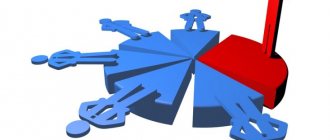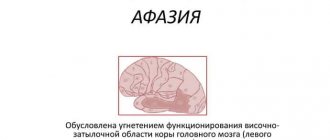Idiocy is mental retardation, which is the deepest degree of mental retardation. In its severe form, it is characterized by a complete absence of thinking and speech. The number of patients among oligophrenics reaches 5%, and the prevalence of the disease is 1 case per 10,000. Often, those suffering from idiocy are unable to walk, the structure of their internal organs is disturbed.
Characteristics of idiocy include the following signs: inaccessibility of meaningful activity, a stop in the development of speech (only individual words and inarticulate sounds are observed). Lack of independent living skills due to the inability to learn and develop self-care skills. The spoken words seem incomprehensible to others.
Deep idiocy manifests itself in the following actions: patients can scratch their face, bite, tear out hair, show negativism, anger or lethargy of any reactions. Patients are unable to eat independently and have difficulty chewing food. They are always unkempt and require systematic care and supervision.
Degrees of the disease
Mental retardation is one of the most common forms of childhood developmental pathologies.
It has 3 degrees:
- debility,
- imbecility,
- idiocy.
Below we will talk about methods of treating patients with the last stage of this disease, the specifics of caring for them and the prospects for improving their condition in the future.
Idiocy represents the deepest stage of aphrenia. It is characterized by the following features:
- Rapid development in adolescence and adulthood.
- With it, the functioning of higher mental functions is impossible - memory, attention, emotional and motor spheres, perception, speech activity. It can be limited to only inarticulate sounds.
- Complete lack of thinking.
- Tendency to self-aggression - hitting, scratching, knocking out teeth.
- IQ is no higher than 20 units.
Stopping attacks
As mentioned above, it is impossible to completely get rid of the disease today, and therefore you have to deal with treatment throughout your life.
But if you regularly engage in treatment, you will be able to avoid relapses for some time and forget about attacks for several years. However, with any provoking factors, the disease will manifest itself with renewed vigor.
There are cases where surgical intervention is required. But, as a rule, these manipulations are necessary only for partial epilepsy.
Often, in order to overcome the disease, you need to take sodium valproate, which is most effective in combating attacks. In 75% of cases, after completed treatment, the patient's condition improved.
Clonazepam is an equally common drug that can prevent attacks. But this remedy also has side effects and is addictive.
Drugs that doctors prescribe to treat idiopathic epilepsy include the following:
A person who has idiopathic epilepsy must constantly take medications, otherwise complications cannot be avoided. Traditional medicine methods can also be used in treatment if herbal remedies have no contraindications or side effects.
Types of idiocy
There are several types of idiocy based on its etiology:
- myxematous,
- xerodermic,
- hydrocephalic,
- amaurotic,
- dysostotic,
- thymic
As well as torpid and excitable forms of the disease.
Myxematous idiocy is associated with hypofunction of the thyroid gland. Patients are found to have insufficient concentrations of thyroxine in the bloodstream.
This hormone directly affects mental development, since under its influence the formation of the cerebral cortex occurs. Thyroxine affects the construction and synthetic processes of this organ. In children, it is responsible for mastering new skills and remembering information.
Xerodermic is inherited. It manifests itself as short stature, mental retardation, hypoplasia of the reproductive organs, neurological pathologies, and xeroderma.
Hydrocephalus occurs as a result of damage to the brain due to the accumulation of cerebrospinal fluid in it.
Amaurotic develops against the background of impaired ganglioside metabolism. There is a decrease in vision, mental abilities, convulsions, muscle hypotonia, death of the optic nerves, and arrest of mental development.
If it develops in adulthood, rapid personality degradation, progressive hearing loss, cerebellar dysfunction, and psychosyndrome occur.
Amaurotic idiocy can manifest itself in the first six months of life, in preschool, puberty, and sometimes in adulthood.
When dysostotic, the central nervous system is affected, there are pathologies of the bone substance and internal organs.
Thymic I appears due to dysfunction of the thymus gland.
Torpid and exalted form.
With torpid, the patient is overly inhibited.
In exalted idiocy, he is overly excitable. The patient screams, shows aggression towards himself and others, and makes meaningless movements. They are stereotypical and monotonous.
Diagnostics
Causes
Causes of profound mental retardation:
- Hereditary or genetic diseases due to a violation of the structure or number of chromosomes (Lejeune syndrome, Down syndrome, gargoilism, galactosemia).
- Rhesus conflict between mother and fetus.
- Congenital anomalies of brain structures, microcephaly.
- Viral infections transmitted by the mother (listeriosis, rubella).
- Birth injury.
- Intoxication of the fetus in the womb (mother’s intake of barbiturates, antibiotics, her alcoholism).
Establishing diagnosis
Early diagnosis is very important in the study of epilepsy.
In addition, for a quick recovery of the patient, it must be accurate. The first thing you need to start with is identifying the reasons why the attack occurred. Treatment will depend on the causes of the disease. One of the important methods in diagnosis is electroencephalography, thanks to which it is possible to identify electrical potentials between two points. To carry out this procedure, you need to put electrodes on your head. This method allows you to identify the focus of inflammation, the characteristics of waves and changes in the condition of a sick person in the period between attacks.
Symptoms
Symptoms of idiocy:
- The patient has no or sharply reduced reaction to any external stimuli.
- The child does not react to the mother, does not distinguish her from another person.
- Emotional expressions are extremely limited. They come down only to feelings of satisfaction and dissatisfaction.
- Instincts prevail over reason.
- Inability to control urination and bowel movements.
- Gluttony and attempts to feed on inedible objects.
- Constant and open masturbation.
- Severe impairment of motor coordination. Patients are extremely rarely able to walk independently.
- Not developed motor skills.
- Behavior is never motivated by external factors. There is a tendency to impulsive actions.
- Facial expressions are either completely absent or express causeless aggression.
- Sensitivity to pain is greatly reduced. Inability to distinguish hot from cold, sweet from salty, soft from hard.
- Patients do not understand speech addressed to them. They are guided by the intonation and facial expressions of the person speaking. They cannot make contact on their own.
- They are not oriented in space and time.
A profound degree of mental retardation is often accompanied by anomalies of somatic development: heart defects, finger fusions, underdeveloped limbs, cerebral or spinal hernias, as well as blindness, deafness, decreased sensitivity of taste and olfactory receptors. By the end of life, the development of relatively intact patients is close to the level of a 2-3 year old child
Complications
At the initial stages of the disease, motor and visual disturbances cause frequent trauma to the child. A sharp decrease in physical activity provokes the development of congestive pneumonia. A complication of convulsive syndrome is status epilepticus. Dysphagia with bulbar syndrome is dangerous due to the entry of liquid and food into the respiratory tract with the occurrence of aspiration pneumonia. A number of complications are associated with lipid deposition in internal organs. Fatty liver leads to the development of liver failure, fatty deposits on the valve flaps lead to heart failure. Patients die from cardiac, respiratory, multiple organ failure, and intercurrent infections.
Therapy
Full recovery is impossible. Treatment is symptomatic and pathogenetic in nature.
In case of metabolic disorders or endocrine disorders that cause mental retardation, replacement therapy for the missing enzymes or hormones is prescribed.
Symptomatic treatment is aimed at mitigating the manifestations of pathology. Patients are administered restoratives. For overly excitable children, sedatives, antipsychotics, and tranquilizers are used. If the patient is severely lethargic, they are treated with psychostimulants.
For hydrocephalus of the brain, dehydration therapy is indicated. Almost all patients require medications that promote partial restoration of mental functions and physical therapy. Anticonvulsants may be prescribed if you are prone to seizures.
Classification
Idiocy is a degree of mental retardation. There are several options for its classification. Therefore, some authors even claim that with idiocy, patients can communicate in words, learn handicrafts and other miracles. This means they use some other classification, different from the one currently accepted. We stick to the following.
- F70. Mild degree - debility. Patients can work if the work does not require a serious application of intelligence - washing floors, carrying, digging. Some are quite kind and can make good husbands and wives. They can be friends, but their main enemy is alcoholism.
- F71. Moderate - mildly expressed imbecility. They can speak, read, write, draw, experience the whole range of emotions, but are quite unpredictable. This is already the form when constant monitoring is necessary.
- F72. Severe - severe imbecility. Intelligence of preschool children. Something like 3-6 years. At the same time, preschool children develop, but patients do not.
- F73. Deep - idiocy. If such a patient miraculously goes out into the street, he will definitely get lost.
It is possible to distinguish degrees of idiocy only from the point of view of dividing into a completely, absolutely seriously ill patient who at least understands something. Singing, reading, drawing, embroidering - all this is not for them. They may scribble something on paper or mutter while fiddling with objects. You just need to make sure that the pencil doesn’t get into your eye, or a couple of objects into your stomach.
Caring for children with idiocy and their socialization
Children with idiocy are placed in a specialized boarding school for the mentally retarded. Family life is impossible for them.
Patients with severe mental retardation require round-the-clock supervision. He is absolutely helpless and can cause harm to himself and others. In institutions, 2-3 specialists should always be assigned to him. In severe cases - more.
Care is as follows:
- 24/7 supervision.
- Satisfying basic needs: food, sleep, hygiene, safety. It is advisable to speak out loud in detail your manipulations related to eating, sleeping, going to the toilet, and hygiene procedures. This will increase the chances of being able to learn some skills.
- Creating a favorable emotional environment.
- Understanding and ability to feel what the patient needs at the moment.
In some patients, mental functions are relatively preserved.
For example, some children are able to understand the mood of the person speaking to them by facial expressions and intonation, while others cannot even, for example, respond with a smile in response to a pleasant stimulus.
This depends on concomitant pathologies, the degree of organic brain damage, the form of the disease, the general condition of the body, and the etiology of the disease.
Those who have retained them to a greater extent are taught basic actions using a specially developed methodology. Basically, the subject of training is the skills of elementary orientation to satisfy basic needs. To assimilate them, they require repeated repetition over several months or years.
A relatively healthy patient can be taught to distinguish colors and perform basic visual-motor orientation.
For example, you can teach to remember your room, bed, place at the table. But orientations must necessarily be related to the satisfaction of his vital needs - sleep, food, hygiene.
Some patients by the age of 13-15 can perform basic actions under control - use the toilet, wash their hands, wash themselves.
During adolescence, there is a transition from children's to adult settings. The patient is placed in a specialized facility outside the hospital. But with a complicated course of the disease, patients are forced to stay in a hospital throughout their lives.
Pathogenesis
Amaurotic idiocy occurs as a result of metabolic disorders with lipid deposition in cerebral and retinal cells, and to a lesser extent in somatic organs (liver, spleen). In Tay-Sachs idiocy, as a result of disturbances in the HEXA gene, which is responsible for the synthesis of the lysosomal enzyme hexosaminidase A, the catabolism of GM2 gangliosides does not occur, and their gradual accumulation occurs. Similar dysmetabolic changes are accompanied by other forms of the disease. Lipid inclusions of different compositions accumulate in cerebral neurons and retinal cells. The infantile form is distinguished by fine-grained inclusions containing cholesterol; in late childhood and juvenile variants of the disease, the accumulation product, along with lipids, has a large amount of protein, and there is no cholesterol.
Macroscopically, amaurotic idiocy is manifested by an increase in brain volume, extensive atrophic changes in the occipital lobes, cerebellum, and thinning of the optic tracts. The microscopic picture in the brain is represented by swelling of ganglion cells and their processes, filling of the intracellular space with lipoid inclusions, shrinkage of the nuclei, and disintegration of the tigroid substance. Similar changes are observed in retinal cells, most pronounced in the area of the macula.







